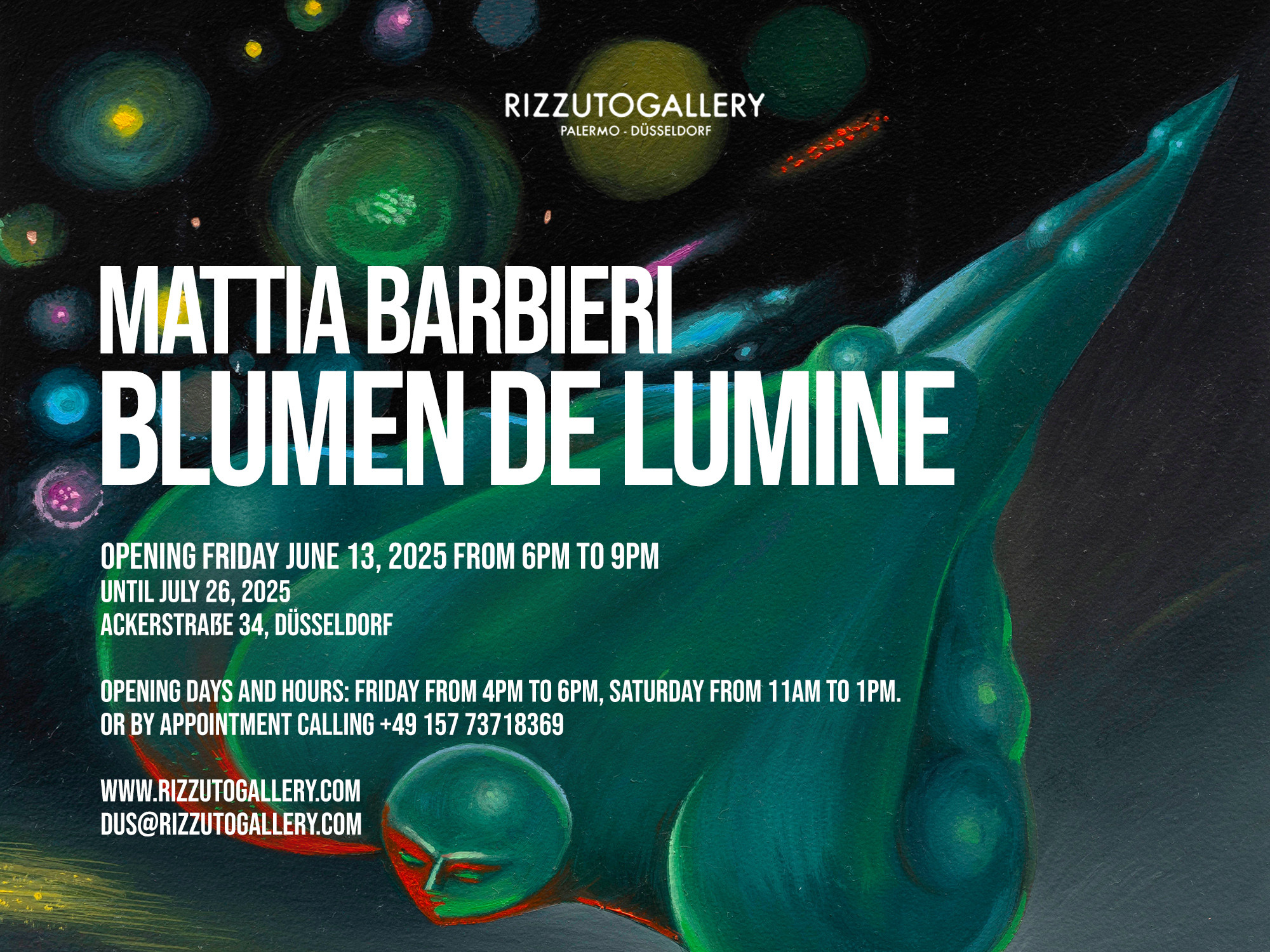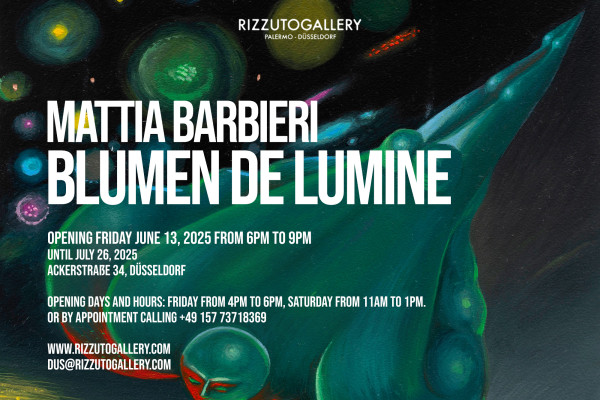Mattia Barbieri
BLUMEN DE LUMINE
BLUMEN DE LUMINE - new solo exhibition by the artist Mattia Barbieri (Brescia, 1985. Lives and works in Milan), which will be inaugurated on Friday, June 13, 2025, from 6:00 PM to 9:00 PM, at the gallery’s venue in Düsseldorf, Ackerstraße 34.
The exhibition will be open to the public until July 26, 2025, and can be visited on Fridays from 4:00 PM to 6:00 PM, and Saturdays from 11:00 AM to 1:00 PM, or by appointment at +49 157 73718369.
BLUMEN DE LUMINE – a linguistic play blending German and Latin – can be translated as “flowers of light.” The exhibition presents a new cycle of works that explore the connection between light, nature, and sacredness, ranging from large-scale panel paintings to smaller, more intimate pieces on copper.
In his works, Barbieri weaves together cultural and spiritual references, citing the famous alchemical treatise Lumen de Lumine (light of light), which alludes to the supreme creator and to light as the origin of all existence. The exhibition becomes a space where the flower, a symbol of beauty and fragility, is transformed into a powerful vehicle of cosmic energy. Pulsating forms and colorful stars burst forth like multiplying gleams, while the flowers, with their central stamens, radiate like small expanding galaxies.
The contrast between delicacy and monumentality is one of the central themes of the exhibition. On the one hand, the flower symbolizes fragile beauty; on the other, Barbieri uses the force of painting and sculptural materials – such as concrete – to emphasize the physicality of the works, heightening the tension between the grace of the subjects and the power of the technique. The artist literally carves into the surfaces of his paintings, creating incisive marks reminiscent of sculpture, which give a tactile and three-dimensional quality to his compositions.
In BLUMEN DE LUMINE, human figures – massive and powerful – appear like divine giants, oscillating between heaven and earth. Spatial dimension and circular movement are recurring dynamics that expand visual perception, as if each painting were a nucleus from which new energy radiates. In this context, the copper support plays a crucial role: beyond serving as a conductor, copper becomes a magical surface, a channel through which the emanations of the subjects flow toward the viewer, endowing the painted forms with power.
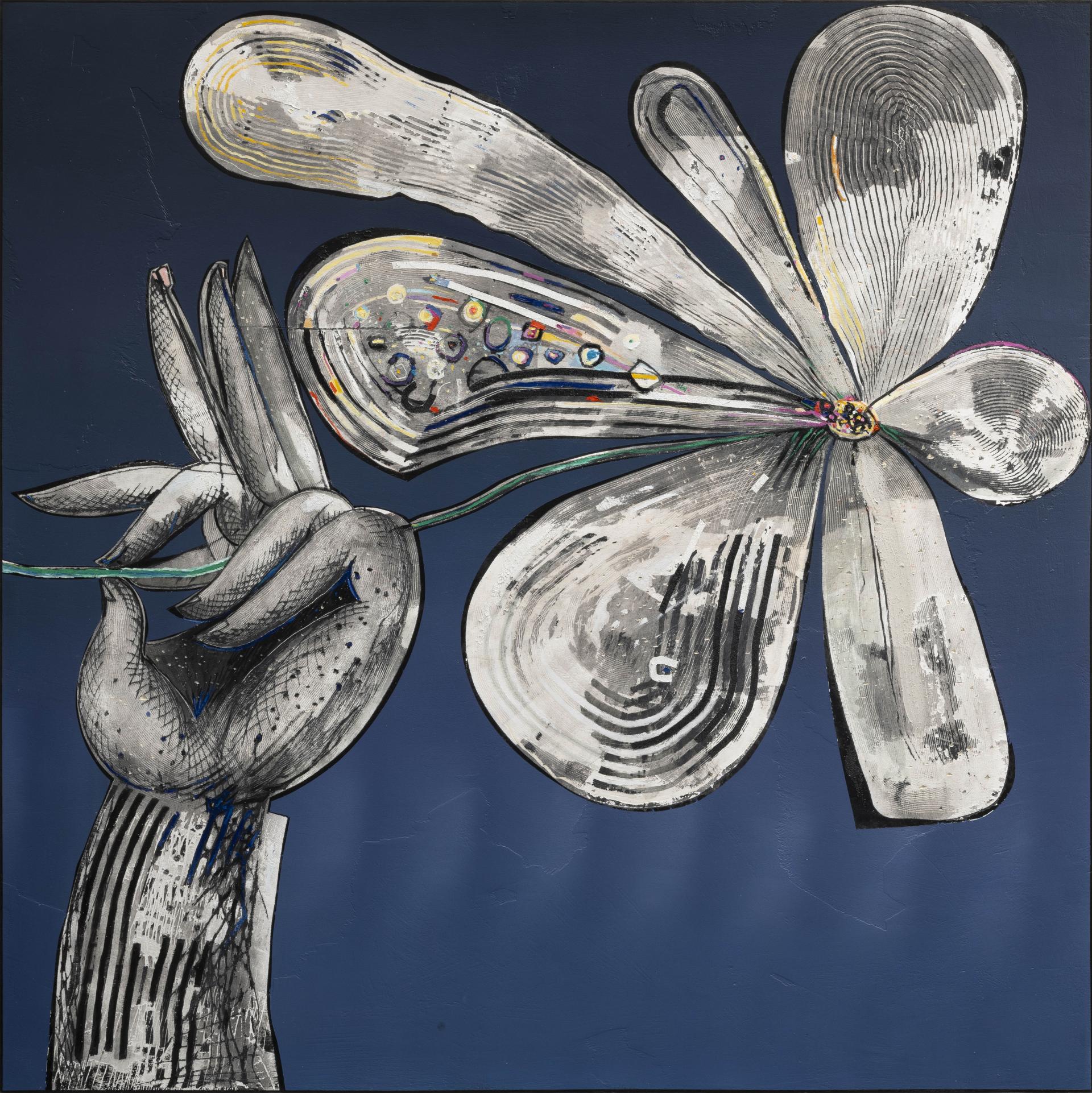
150 x 150 cm
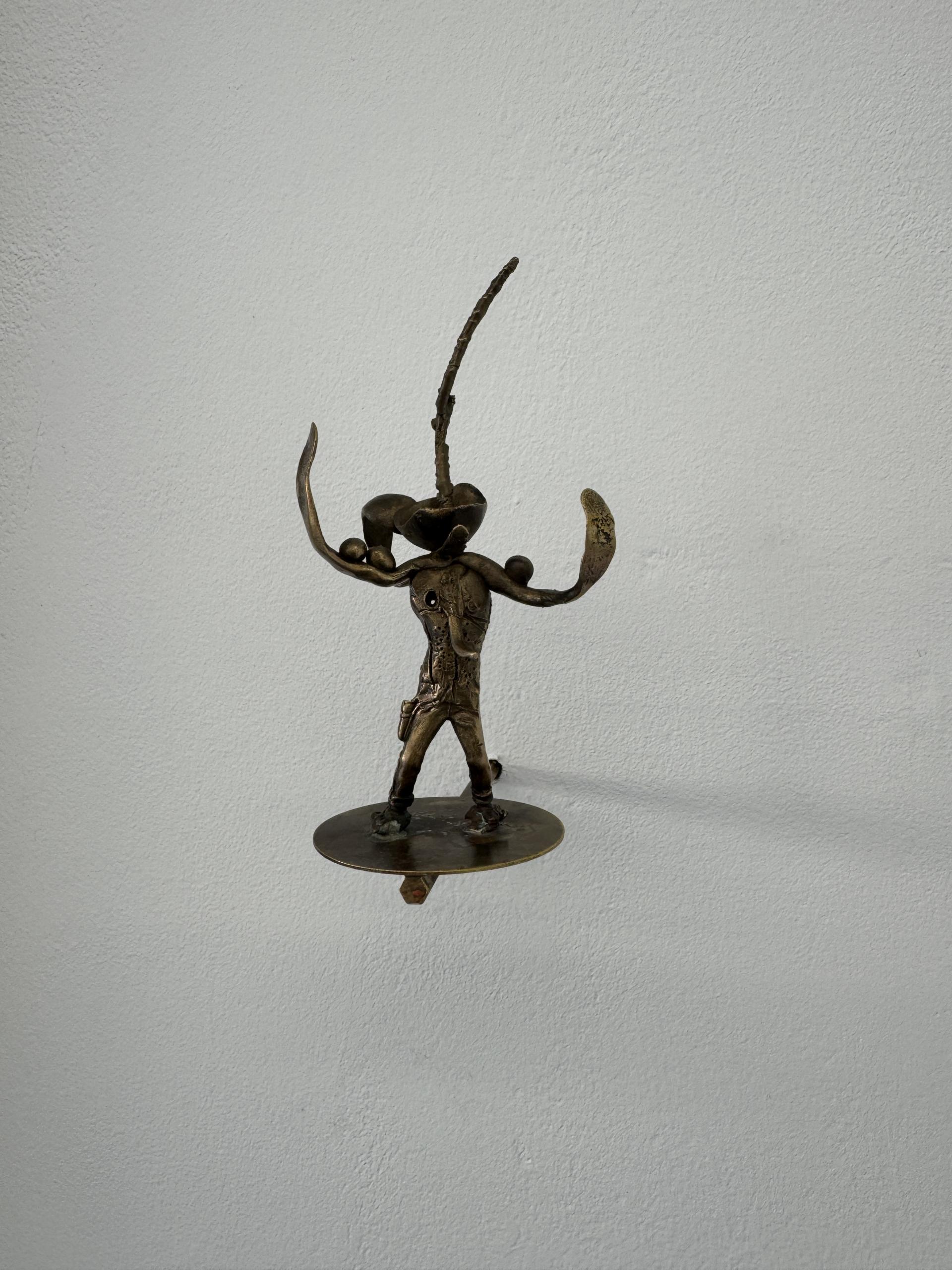
6 x 12 x 8 cm
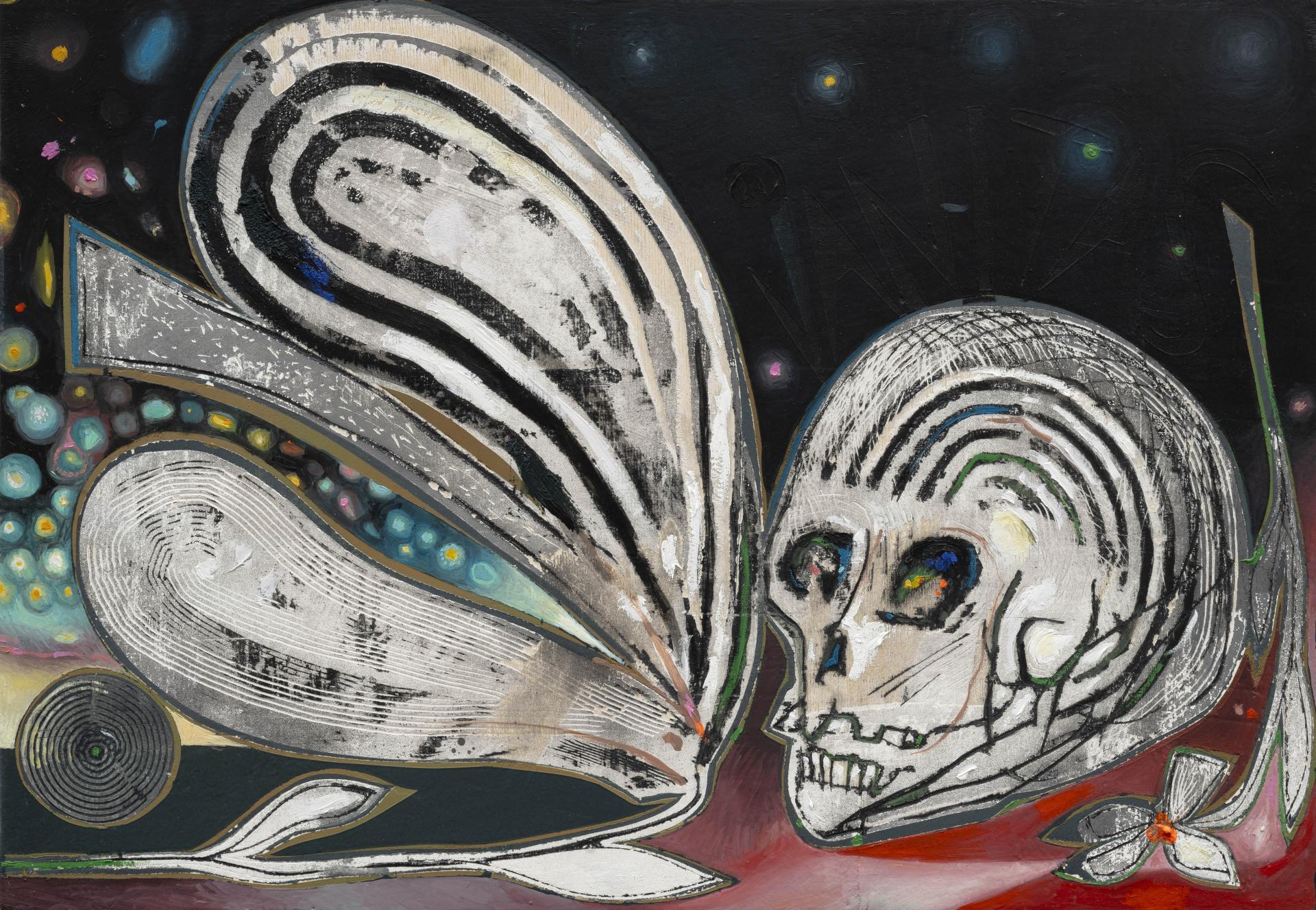
37 x 53 cm
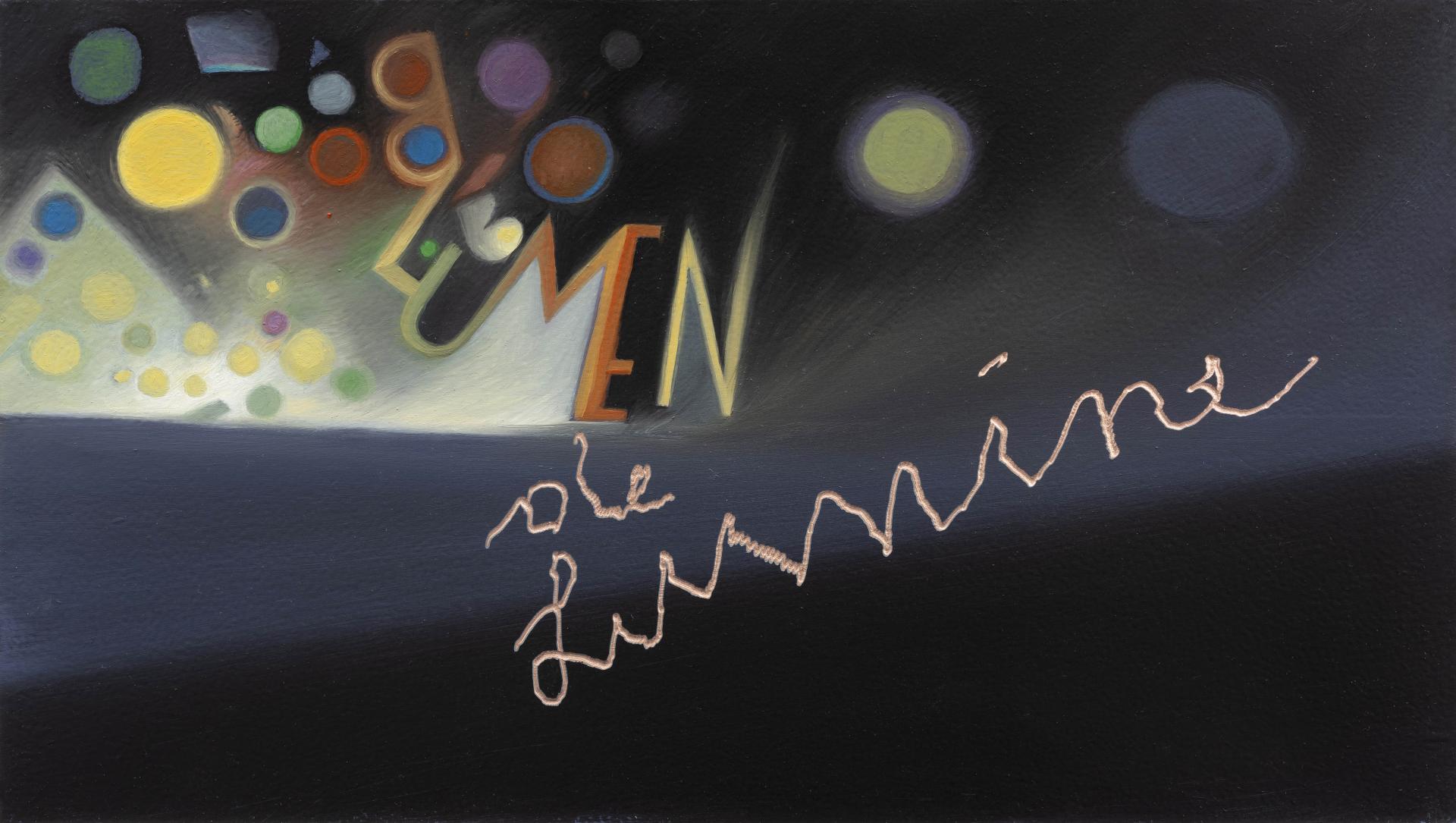
16,5 x 29 cm
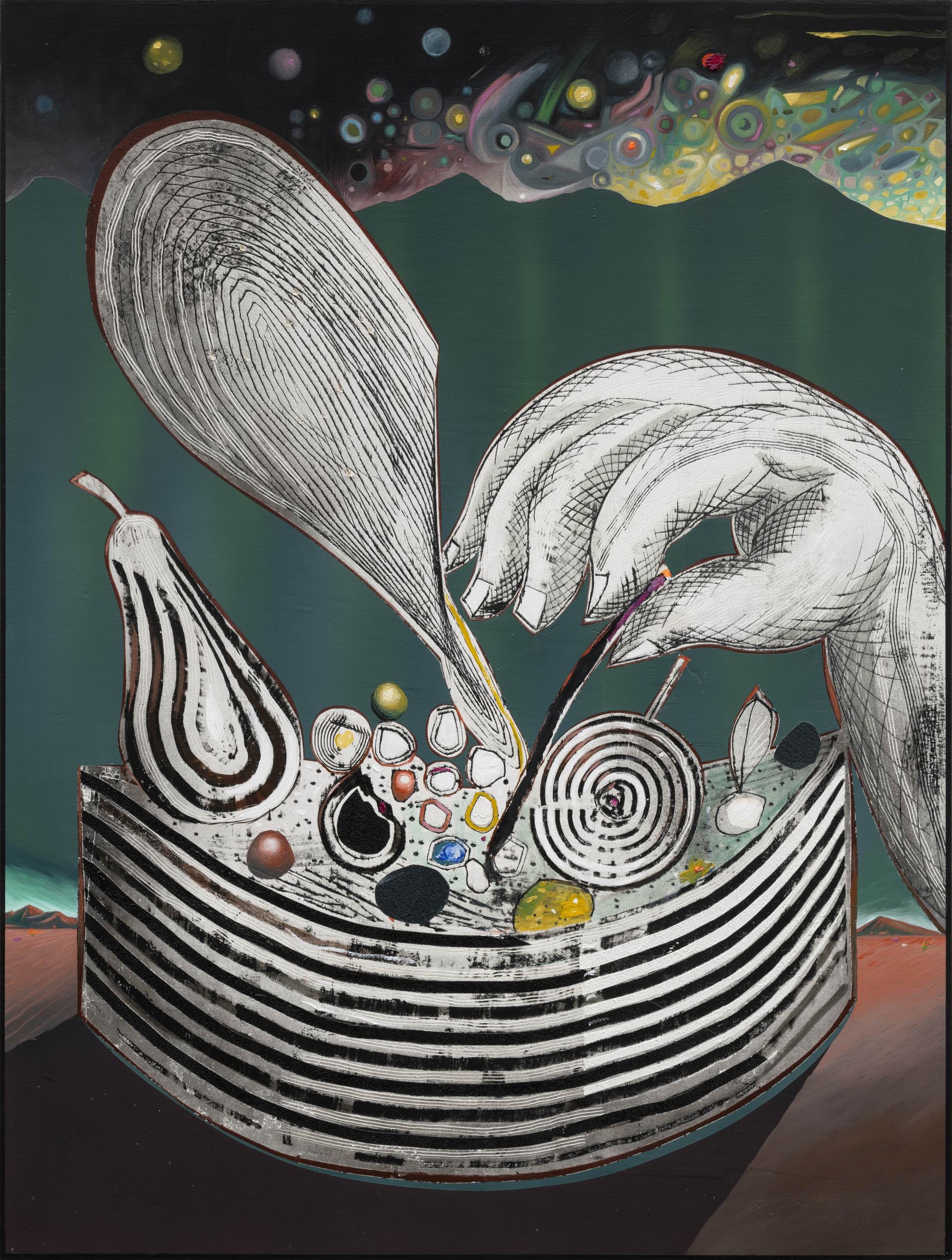
98 x 74 cm
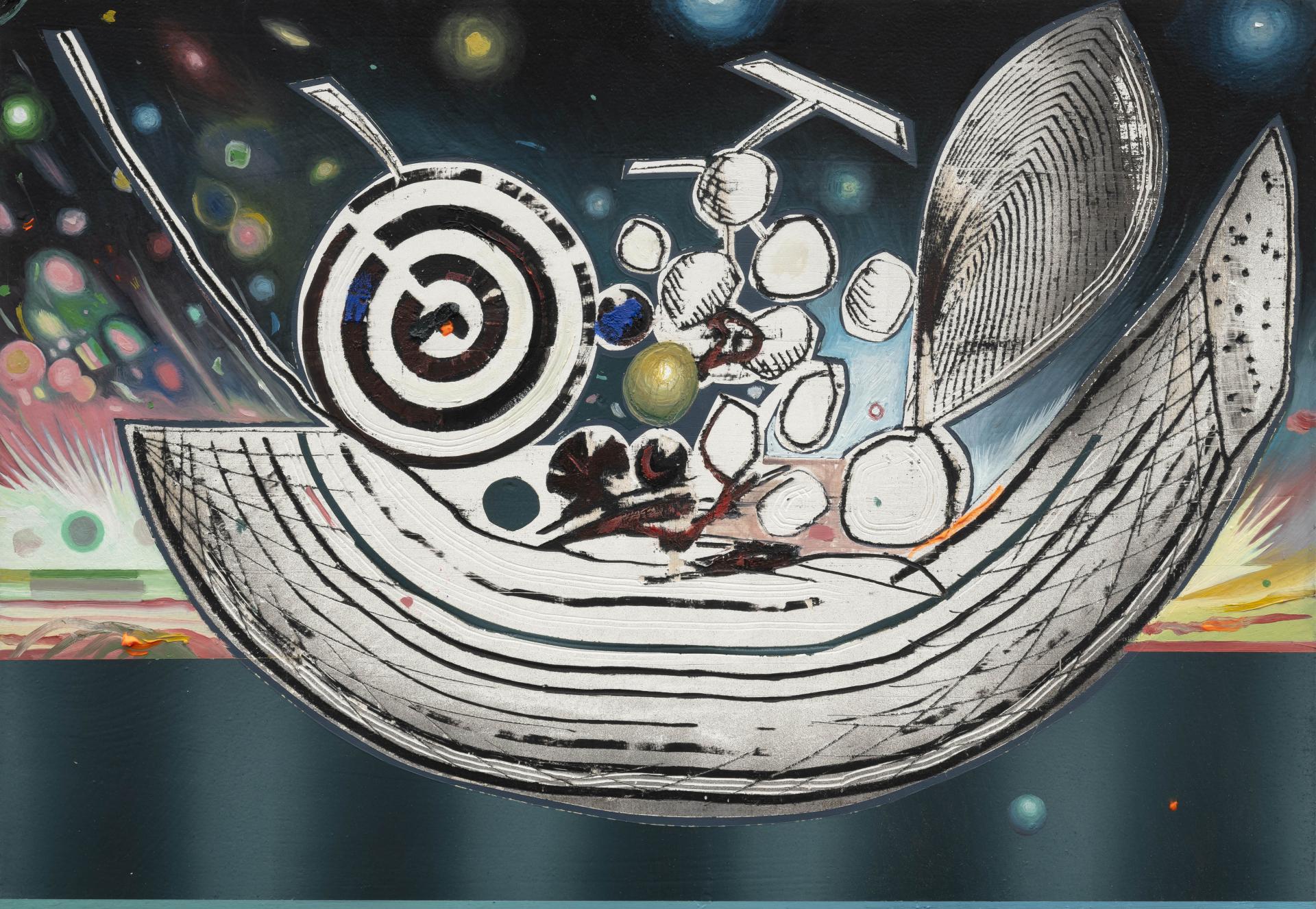
37 x 53 cm

32 x 22 cm
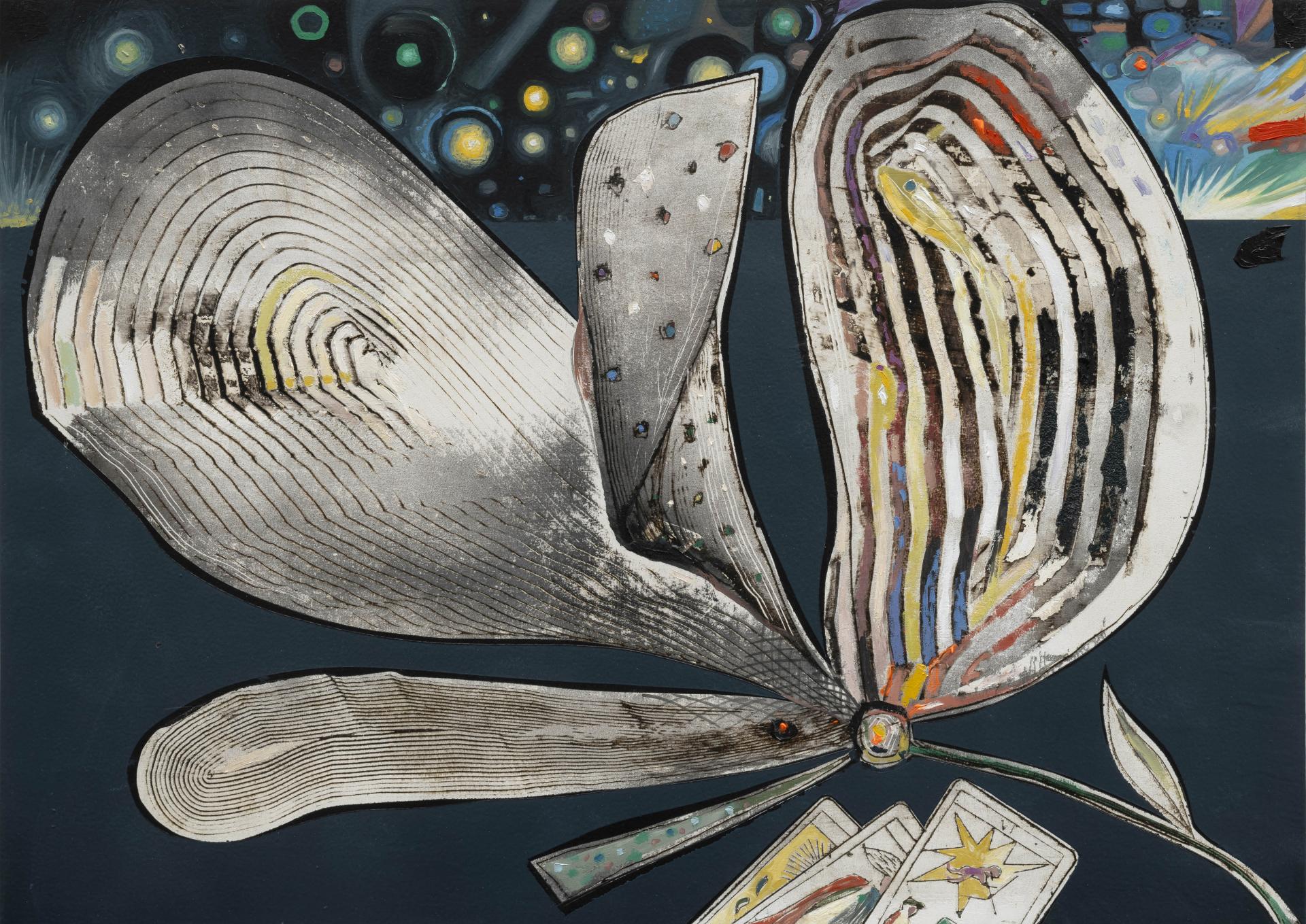
50 x 70 cm
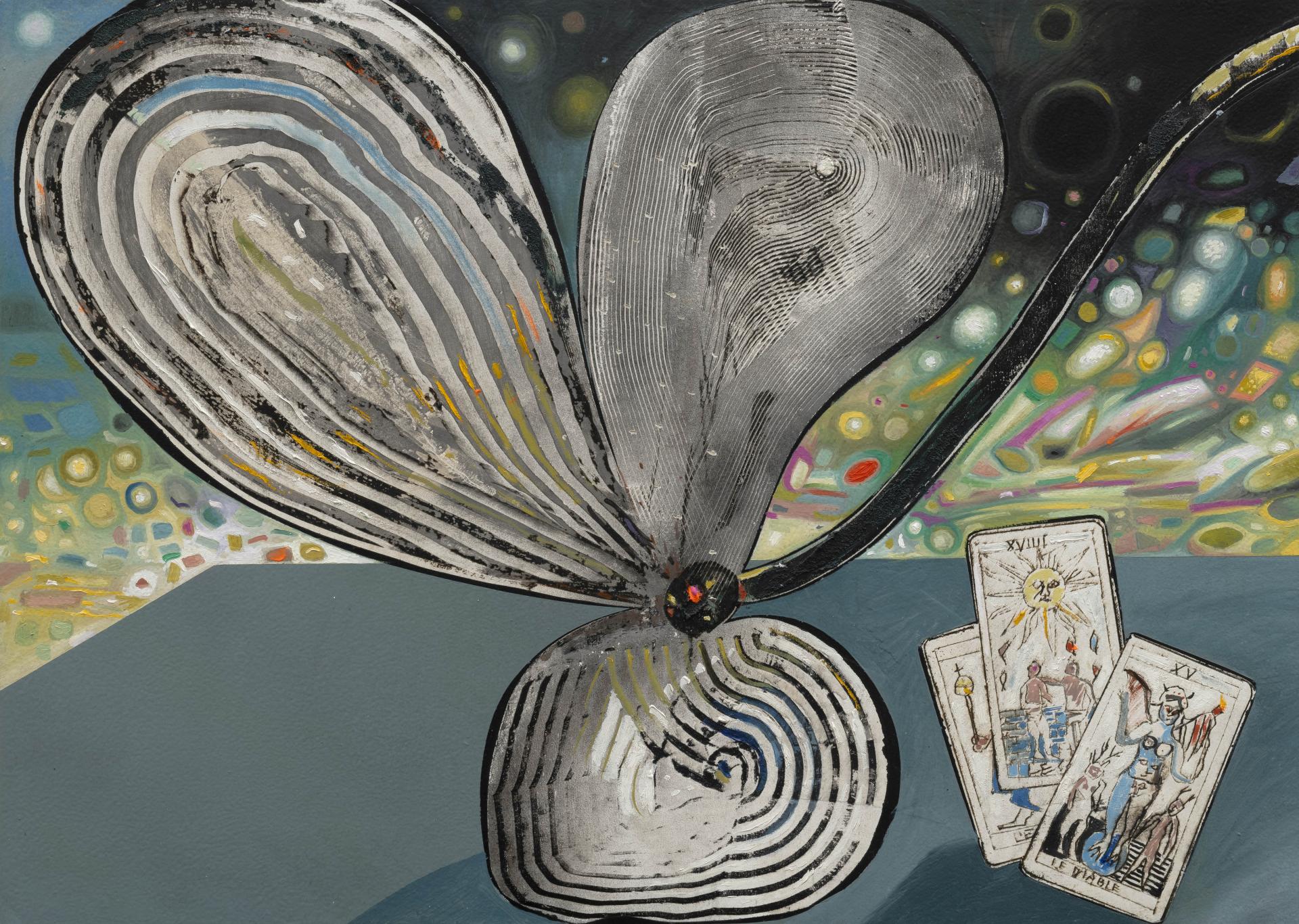
50 x 70 cm

19,5 x 19,5 cm

200 x 90 cm
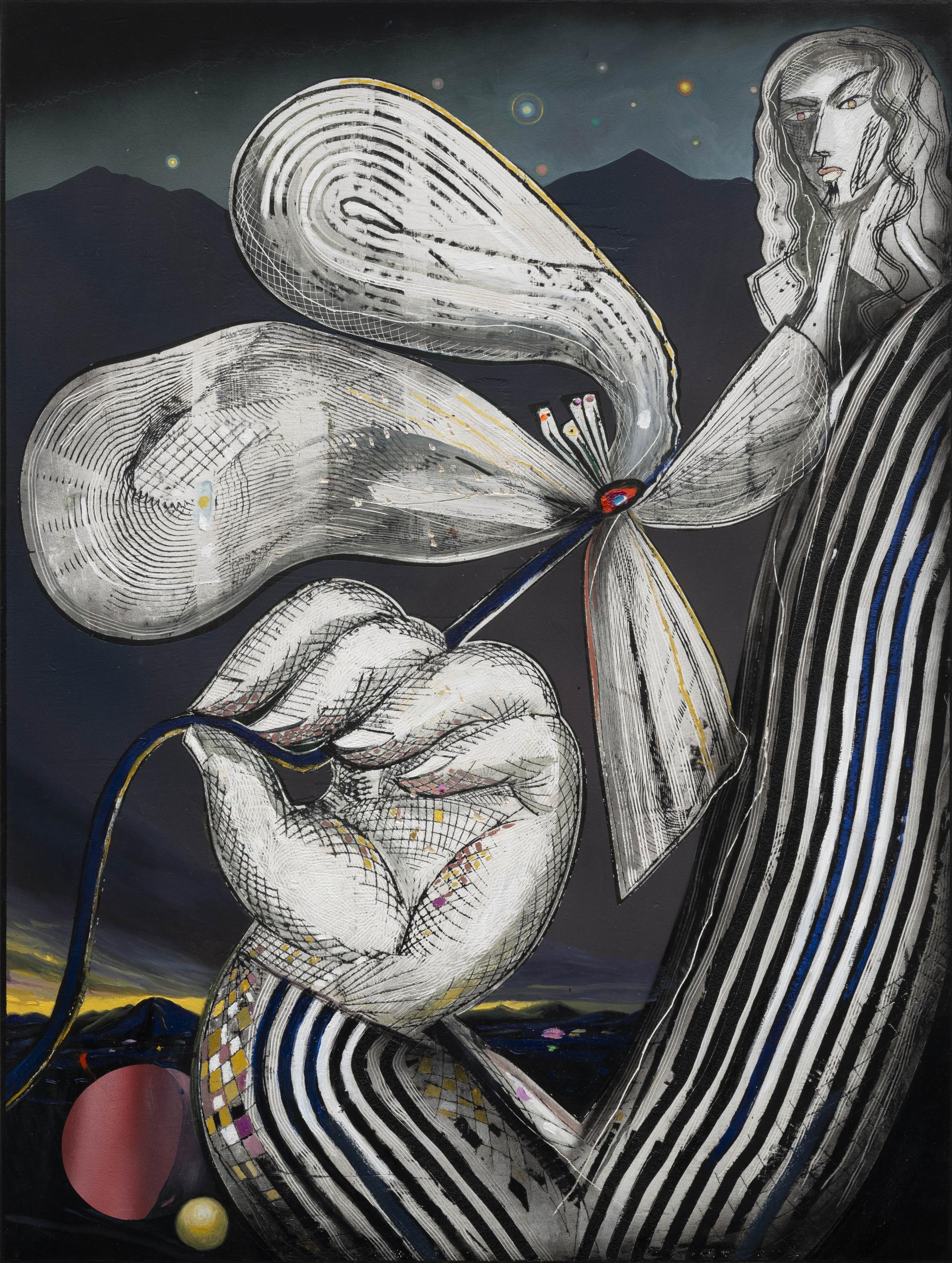
98 x 74 cm
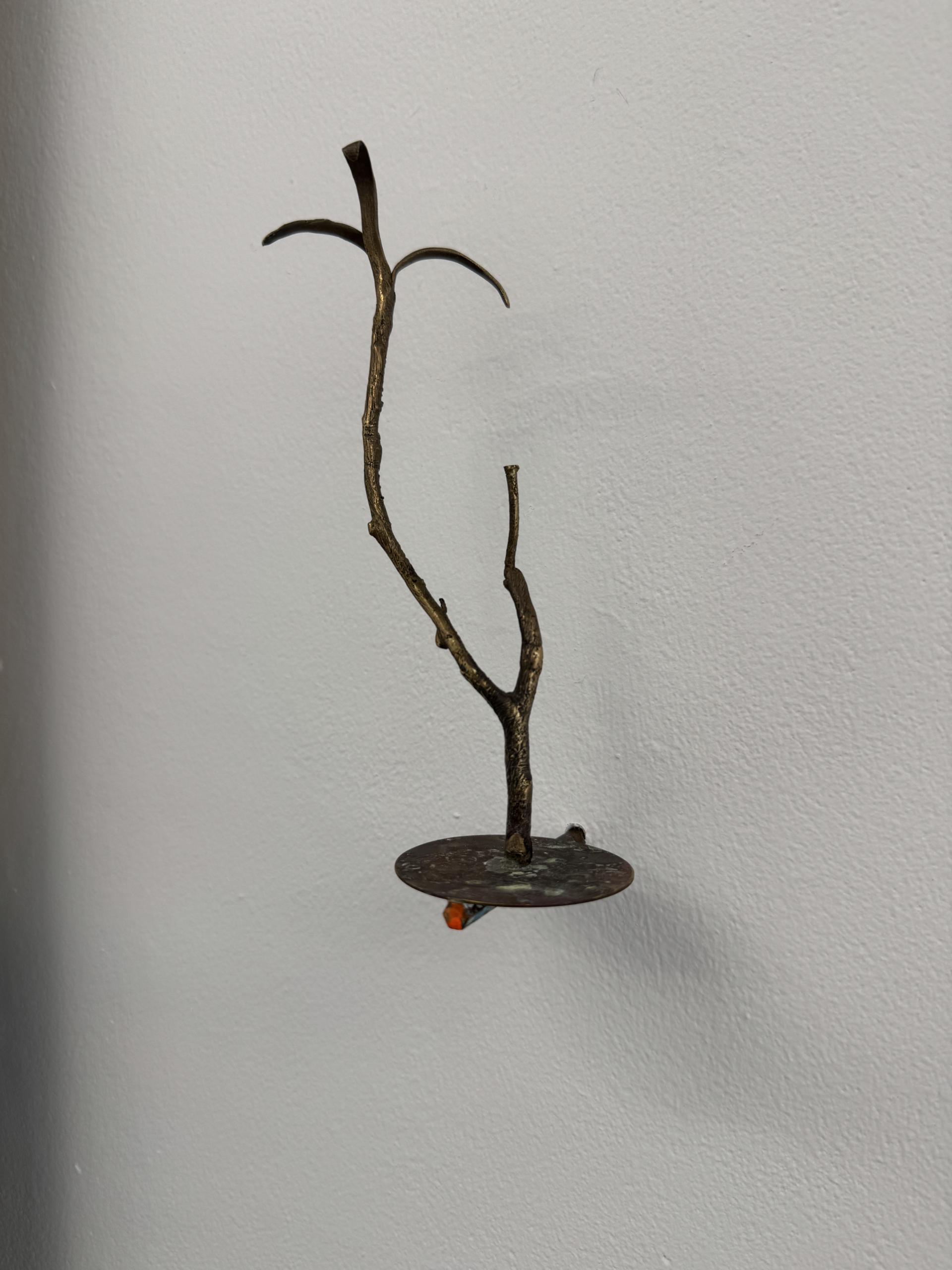
16 x 10 x 8 cm
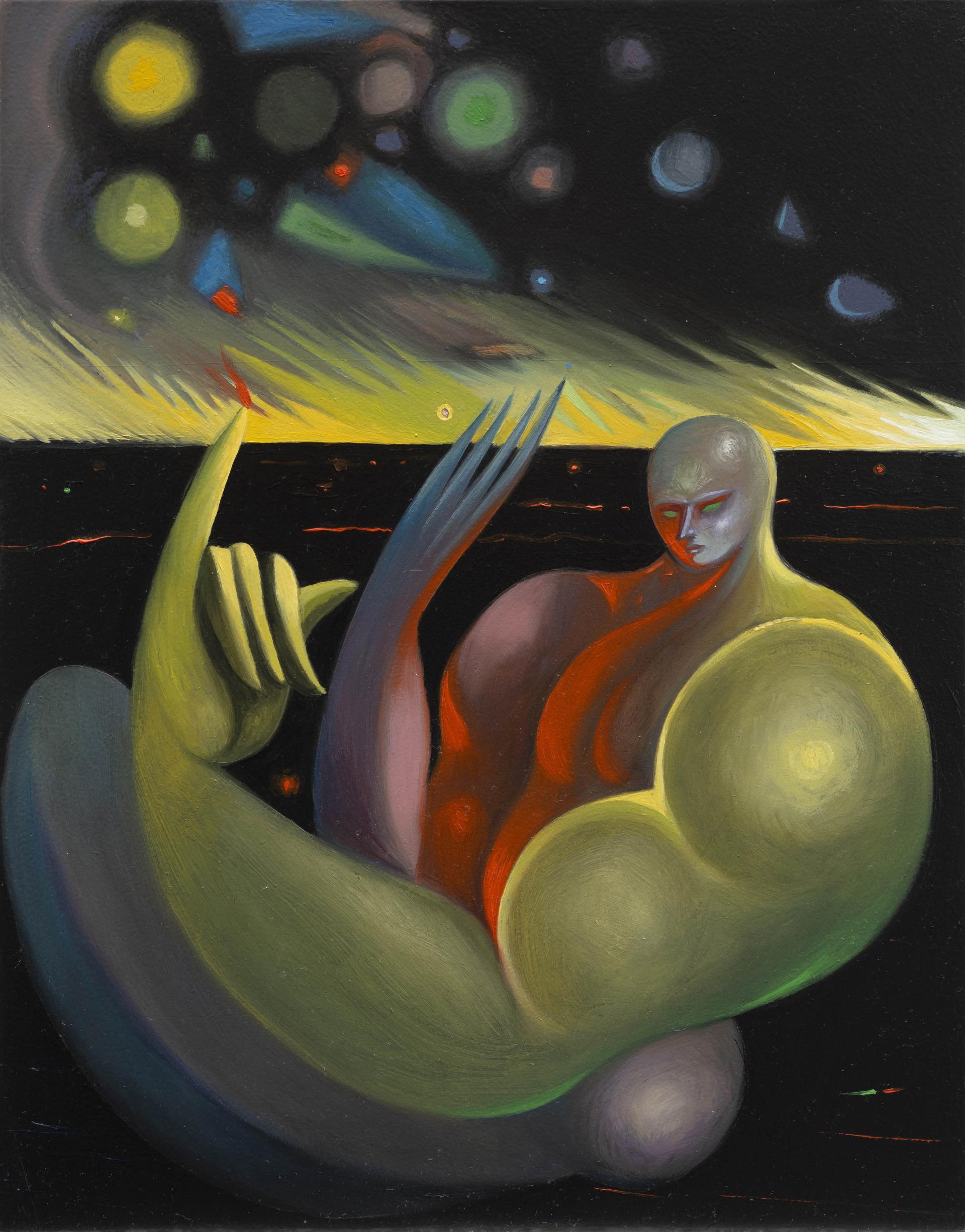
29 x 23 cm
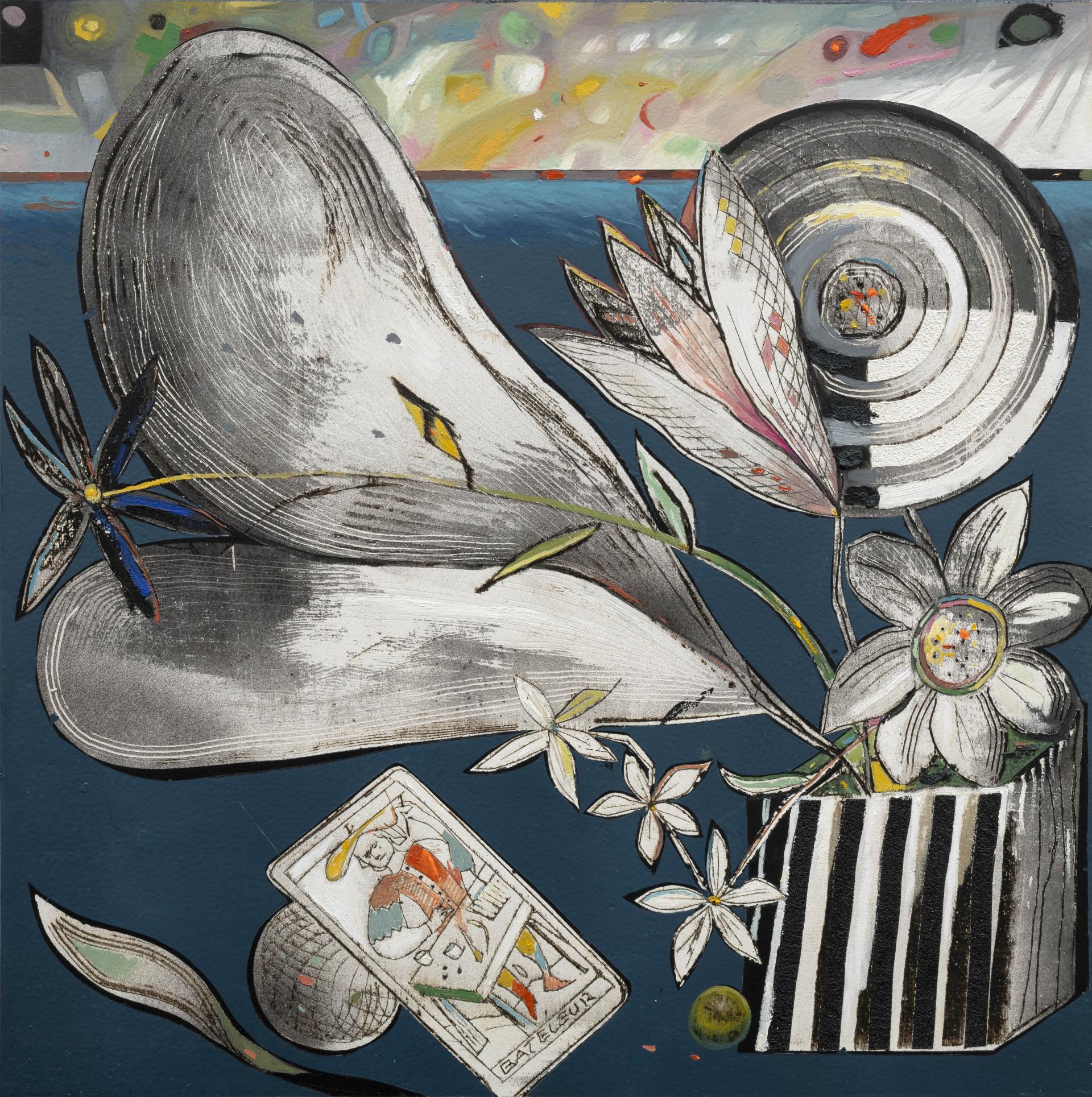
50 x 50 cm
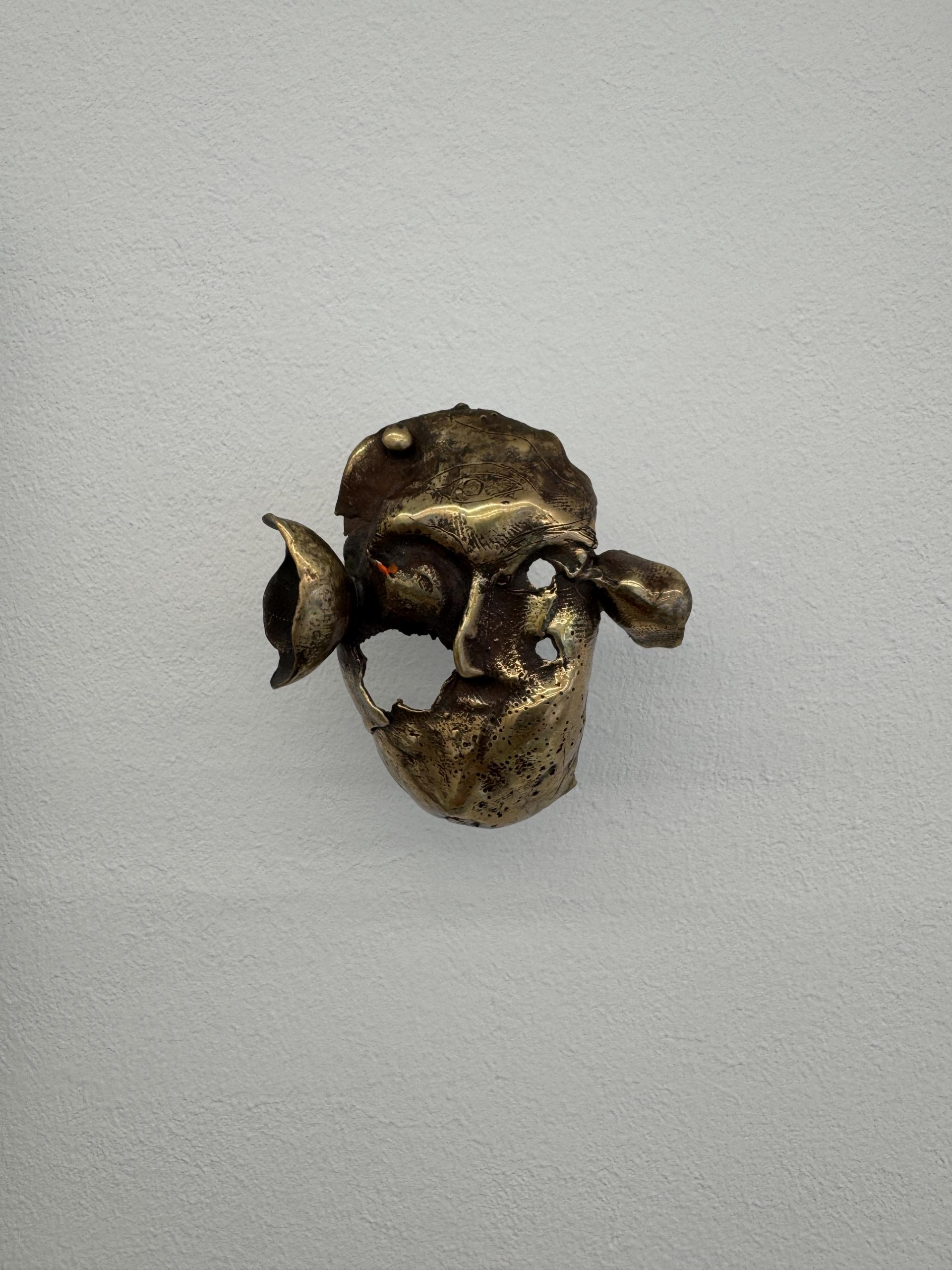
7 x 7 x 7 cm
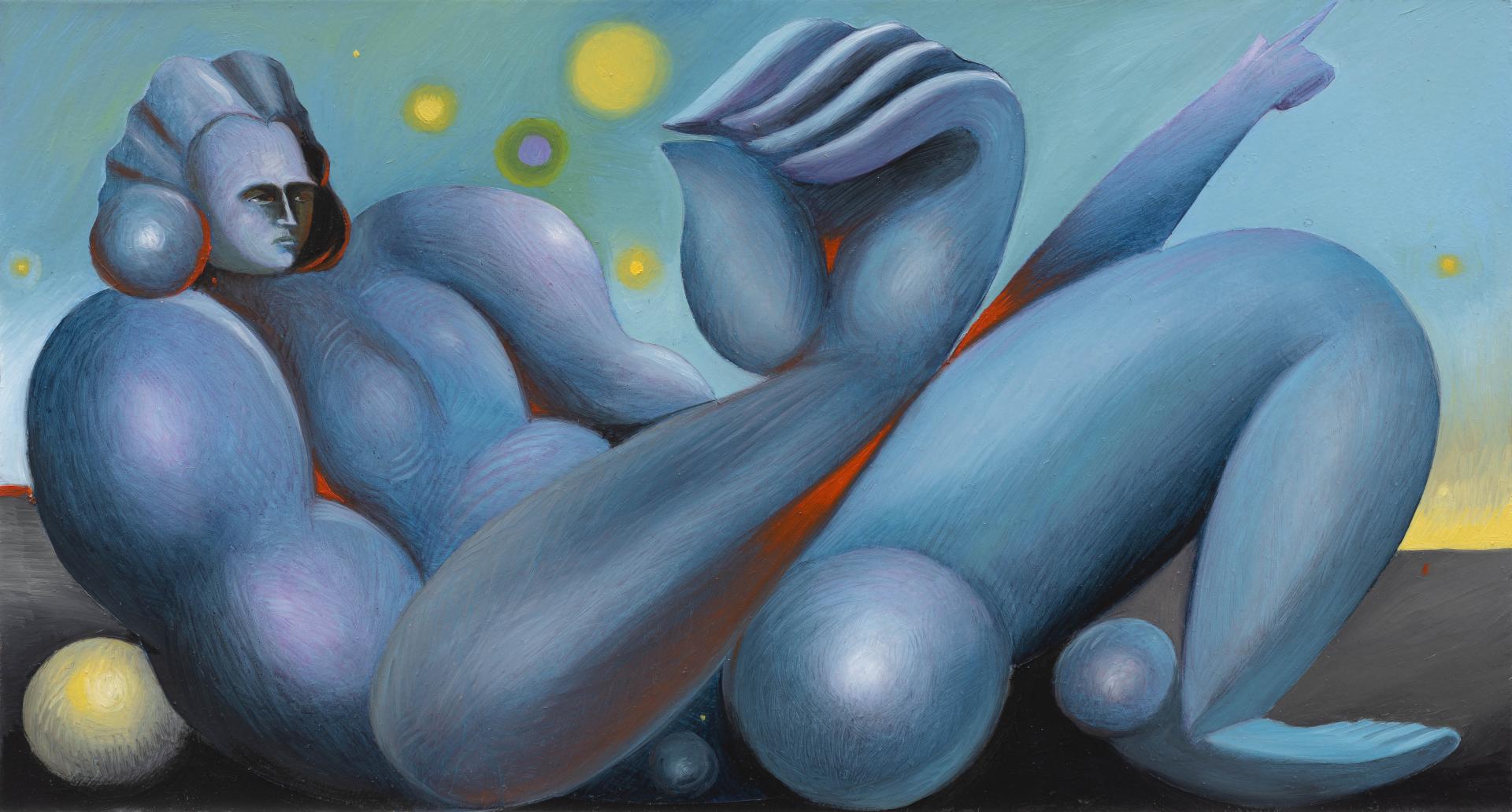
16 x 30 cm
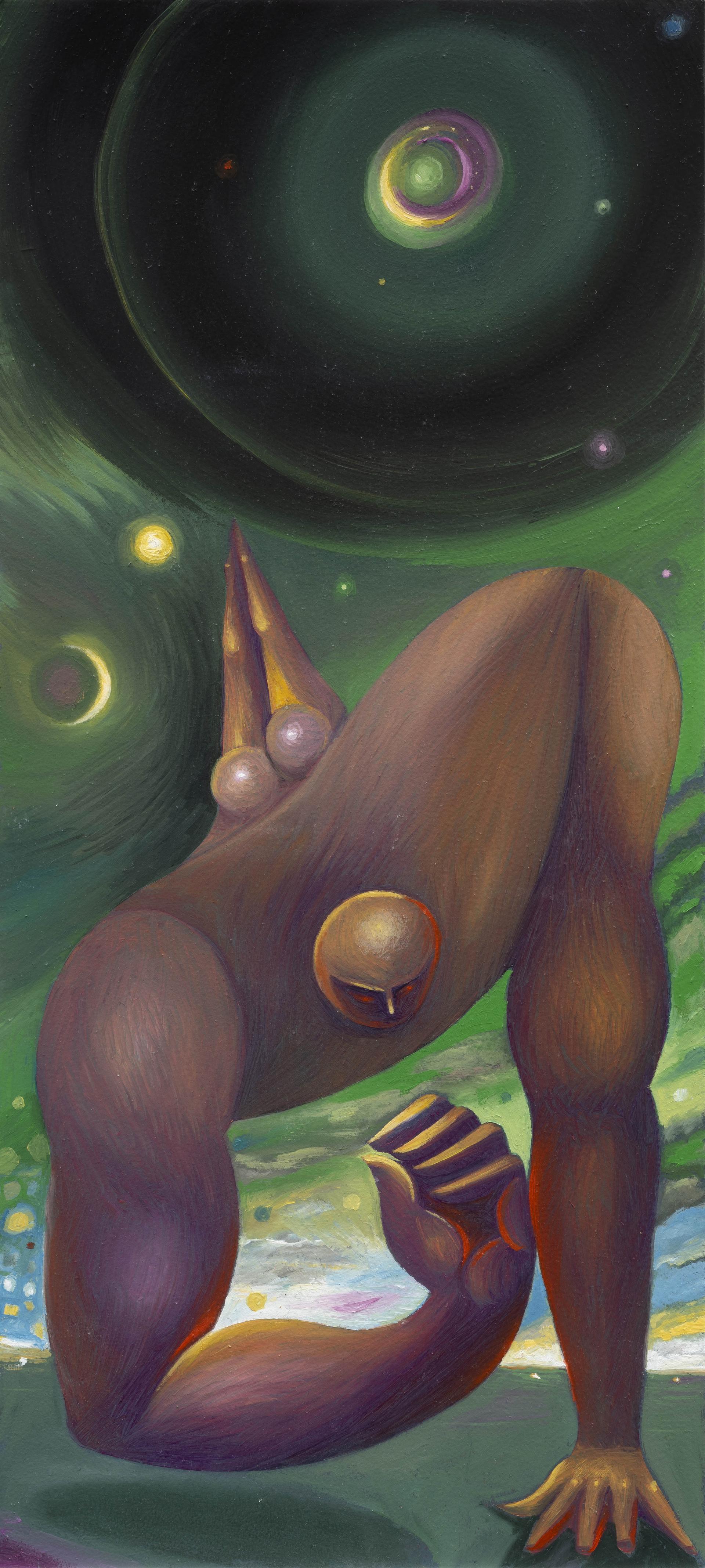
37,5 x 17 cm
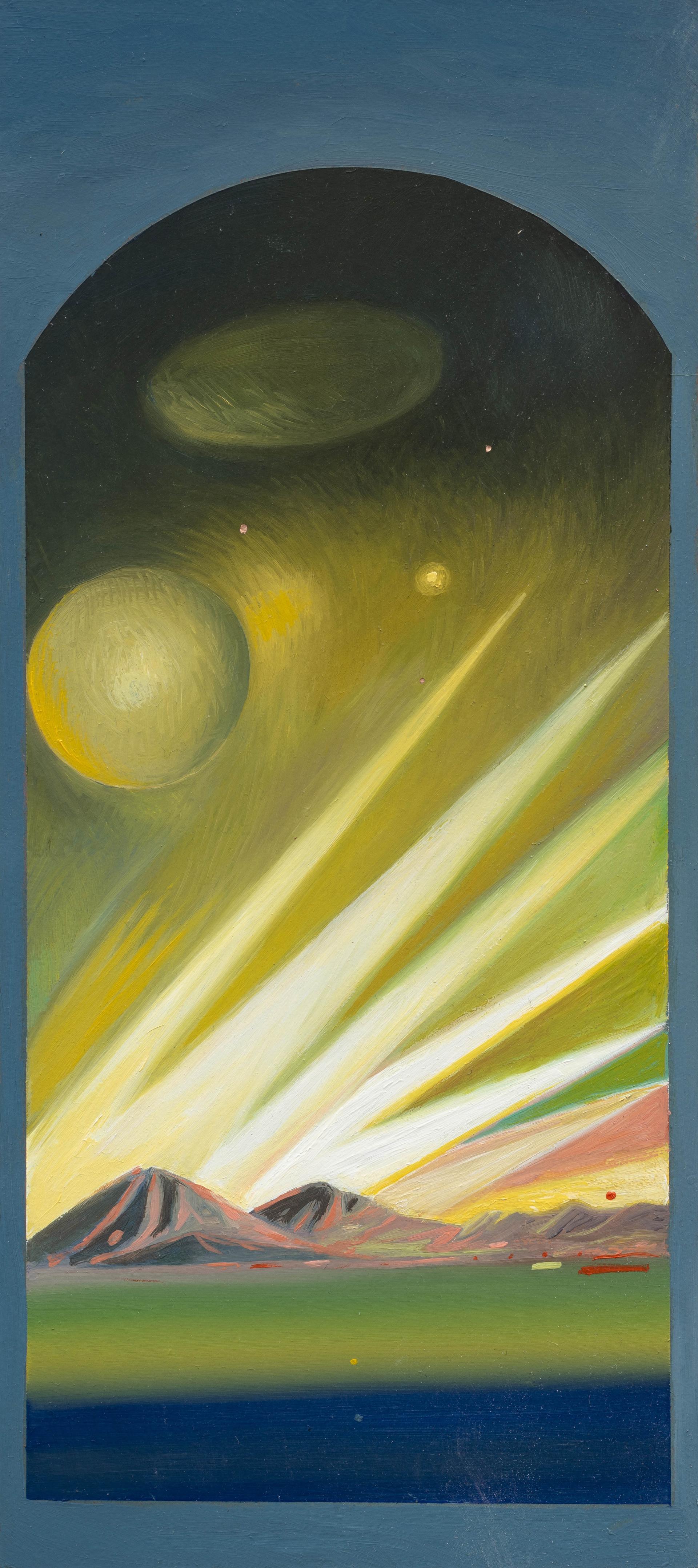
29,5 x 13 cm
